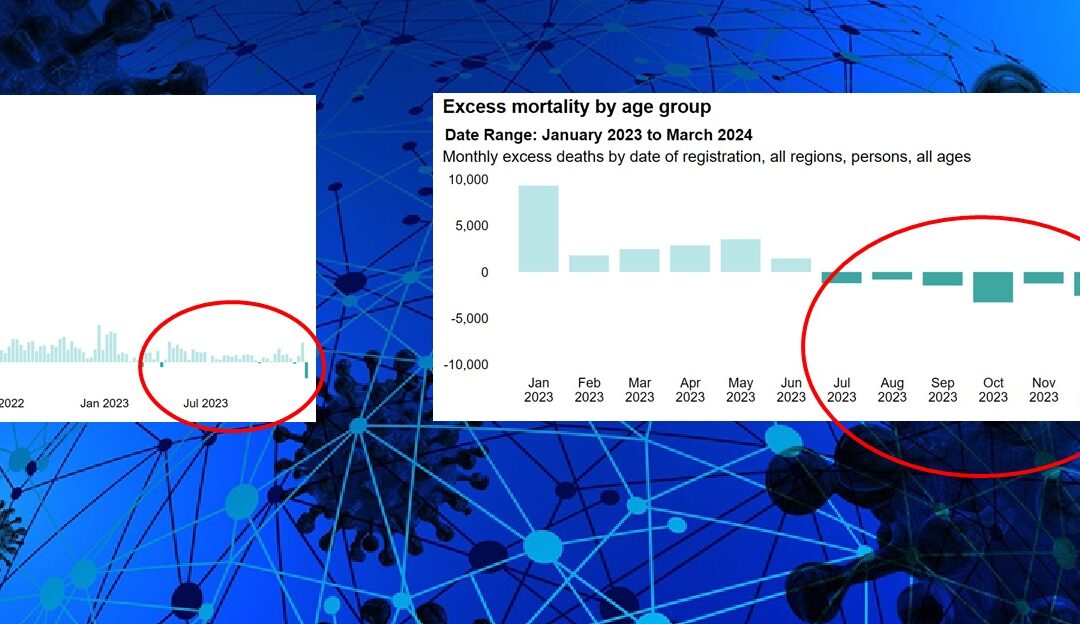From January 2024 the Office of National Statistics changed how it calculated expected deaths. This impacts on reporting of excess deaths statistics and I thought it would be interesting to understand the impact and assess the new method.
One interesting effect is that the new method brings the ONS into line with the Office of Health Improvement and Disparities (OHID)’s more recent reporting of excess deaths which is shown in the right hand chart in the image above. These contrast with the OHID’s previous reporting which included the left hand chart above which seem to conflict somewhat!
My main conclusions from the analysis were:
- Excess deaths have continued beyond the pandemic through 2022 and 2023
- Previous methods used by the ONS to estimate expected deaths were flawed, meaning that these methods over-estimate excess deaths
- The new ONS method produces very similar outputs in the first 17 weeks of 2024 to the forecast produced from a simple linear regression method that I applied to pre-pandemic death statistics
- Both these methods do indeed suggest fewer deaths than expected in 2024 so far; however, the historical variability in deaths in this part of the year mean that no conclusions regarding the continuation of excess deaths can yet be reached
ONS’s new method for calculating excess deaths does give me some concern, in that if it includes recent trends in mortality (i.e. 2022 and 2023 data) then if, as I think I have demonstrated in my analysis, excess deaths were present in this period, these will become “baked into” the expected death calculations and will over time therefore be lost, with this new level of deaths becoming the norm.
If you want to view the analysis and how these conclusions have been reached, you can view the presentation on youtube by clicking the image below

